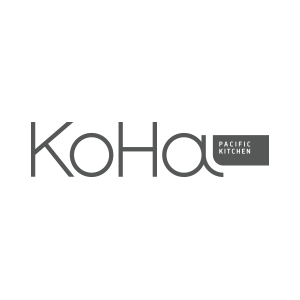Your Restaurant Website Might Be Failing You
21, Mar. 2019
If you aren’t paying attention to visitor need states on the mobile web, you’re missing out on key opportunities to convert passersby into customers. People are looking for your virtual sandwich board on the sidewalk: If you don’t put it out, you can be sure your competitors will.

This Magic Moment
Several years ago, the thinkers at Google parsed their reams of data and coined the term micro-moment as a way to describe the various need states of mobile users and how they make their mobile purchasing decisions. They discovered not one, but four relevant micro-moments that comprise the online experience for those interacting with a brand. The I want to know, go, do, and buy moments are all distinct need states, and opportunities to influence the buying behavior of a prospective customer. The experience your digital brand provides in those moments can have them turning towards – or away from – your business. We thought we’d use this edition of our Jump newsletter to see how micro-moments can make or break a restaurant brand, and how you can succeed at these critical brand touchpoints.
1. I Want to KNOW
Mobile searches for “best” grew 80% from 2015 to 2017. The ‘I want to know’ micro-moment happens when someone is exploring or researching but is not necessarily in purchase mode yet. If you are highly analytical, you likely spend a good deal of time here before committing to something. Your customer is doing the same, so be sure to arm them with the info they need to commit to your brand .
Mobile First
For restaurants, the ‘I want to know’ micro-moment requires a commitment to mobile optimization first. Knowing that your customer spends more time researching restaurants on their mobile device than on their desktop leads to a commitment to mobile first that goes beyond mobile-friendly. If you’re not looking at your website on your mobile device, you can be sure your customer is.
What’s On The Menu?
Having a menu that is easily accessible and able to be filtered for dietary concerns like allergens or vegetarian options – or simple personal preferences – is a must. Whether planning for single or couples dining, or for a group, knowing what’s on the menu, including pricing, is important for those planning a meal out.
Beyond the Menu
The type of experience your patron should expect, including the service model, should be readily apparent on your mobile site, and should be accomplished through copy, video, and supporting imagery. All of these should help to answer the customer’s most pressing question: “Is this restaurant right for the occasion I have in mind?’
Your Social Commitment
Today’s diner wants to feel good about their experience, and aligning themselves with a restaurant that believes in similar things is important. Showcasing your commitment to social responsibility through things like charitable giving, or sustainable packaging, environmental, or waste initiatives can resonate with a potential customer. Sharing your food story about the importance of locally-sourced ingredients, using seasonal goods, and partnerships with farms or local markets can also help your ideal customer to find you.
Feel The Vibe
Of course, the presentation of your content will start to create a vibe for your restaurant, and it’s important that your digital properties reflect the physical space. Beginning that emotional brand connection, sense of anticipation, and customer expectation prior to arrival can put the customer at ease about their choice, but can also heighten their familiarity with your staff, your menu, and your brand story, which empowers the customer in a positive way. Bridging the on- and off-line worlds is a key part of creating a sustained customer experience, and one that should not be overlooked.
2. I Want to GO
The moment when someone is looking for a local business or is considering buying a product at a nearby store means they’re ready to commit, so how do you meet them in that space and fill their need?
Location, Location, Location
The physical location of your business needs to be indexed with search engines and popular mapping software like Waze and Google Maps so that you come up in proximity searches for mobile users. Having a well-built location page is one way to organically populate search listings, but you should also be manually adding your location info and hours of operation to the most popular social sites. Keeping these details up-to-date can be the difference between a busy night and closing early.
Get Found
Your search engine performance is important here, as Google searches should ideally have you coming up above your competition. Building your site the right way, writing good, optimized copy, and refreshing your content from time to time area all good ways to boost your search engine results.
Pay Attention to Ratings and Reviews
You also need to rate well on third-party review or ratings apps like Yelp or Tripadvisor. Cultivating comments through engagement here can boost your ratings and your responsiveness can address any negative issues you may have had.
3. I want to DO
When a potential customer needs assistance completing a task or trying something new, it’s important to be a helping hand in that moment. And while the restaurant website doesn’t have a ton of these opportunities, there are a few important ones.
Help!
Make sure your customer can get the help they need, when they need it. An online chat tool can help with the online order or reservation booking process, and an FAQ page can deliver the answers a patron may have about your restaurant. Even better, dedicated blog pages and/or video content can also answer questions, especially about ingredients you use, preparation methods, etc. Finally, kicking it old school and having a phone number front and centre allows for customers to call and get the information they need, right now.
Cater to your Customer
If you offer catering, make sure your mobile customer can find out how it works, and what you offer, with a full catering menu online. Then, ensure that contacting your catering crew via mobile is easy, so as not to miss out on any important details or sales.
The More the Merrier
Reservations often get made in group settings on the fly, so being able to quickly and easily find out info about group accommodations and book them on a mobile device will lead to more bookings and more happy customers.
4. I want to BUY
In 2017, smartphone users were 50% more likely to expect to purchase something immediately than they were in 2016. That trend has only increased since. The point of purchase is no time to let your customer down with a sub-par experience. Speed, convenience, and trust are all key aspects of purchasing and payment moments, but don’t forget that even after the customer has decided to buy from you there is still work to be done. Being present to help them make good decisions during the buying phase will enhance their experience and increase the chance of repeat business.
Placing The Order
Awhile back we did a piece on loyalty programs, and the value of those to your business in an age of third-party order and delivery. Without reprising that article in too much depth, the opportunity to capture a customer through your loyalty program by simplifying the order process and offering rewards is critical. Whether for pickup or delivery, giving them a seamless process within your ecosystem helps maintain brand loyalty, create habitual behaviours, and develop brand ambassadors.
Off-Premise
Takeaway and delivery is a massive part of your business. We get it. Make sure your customer can easily access your online order system online on their mobile device, or that you are featured prominently on 3rd-party order apps. Pay-to-play is a necessary evil here, but can be worth the price of admission to have your brand come up early in a customer search.
In-Store
Order and payment kiosks are becoming more prominent in restaurants and provide the customer another way to place their order. Consider order/payment at the table through your app, to ensure that you don’t miss opportunities for drink or dessert orders, and to encourage trial by pushing customized limited time offers in real time. This is especially important in busy restaurants with thirsty customers and can ease the order-taking burden on your serving staff, freeing them up to play the host and enrich the experience for your guests.
Being ‘In The Moment’
The micro-moments created by visitors’ need states provide unique opportunities for you to make meaningful connections with customers – but you’ve got to be present in those moments. Getting there requires a commitment to digital in ways most companies only pay lip-service to. If you want to survive in the mobile era, you need to invest in your digital presence and make it a priority. See you online soon.
This episode is brought to you by:

Bryan Aust
Account Manager
Bryan has helped numerous restaurant clients with their digital and mobile strategies, connecting their digital brands with their physical ones. He’d love to talk to you about yours.

Kevin
Hemsworth
writer

Kaitlin
Thatcher
creative

Sierra
Katrian
Developer
The Proof
We’ve done this before. And chances are, you’ve seen our work in action. Basil Box, KOHA, and MidiCi are all examples of restaurant clients we’ve helped to capitalize on consumer micro-moments.
Like What You Heard?
Sign up below and never miss a beat.


